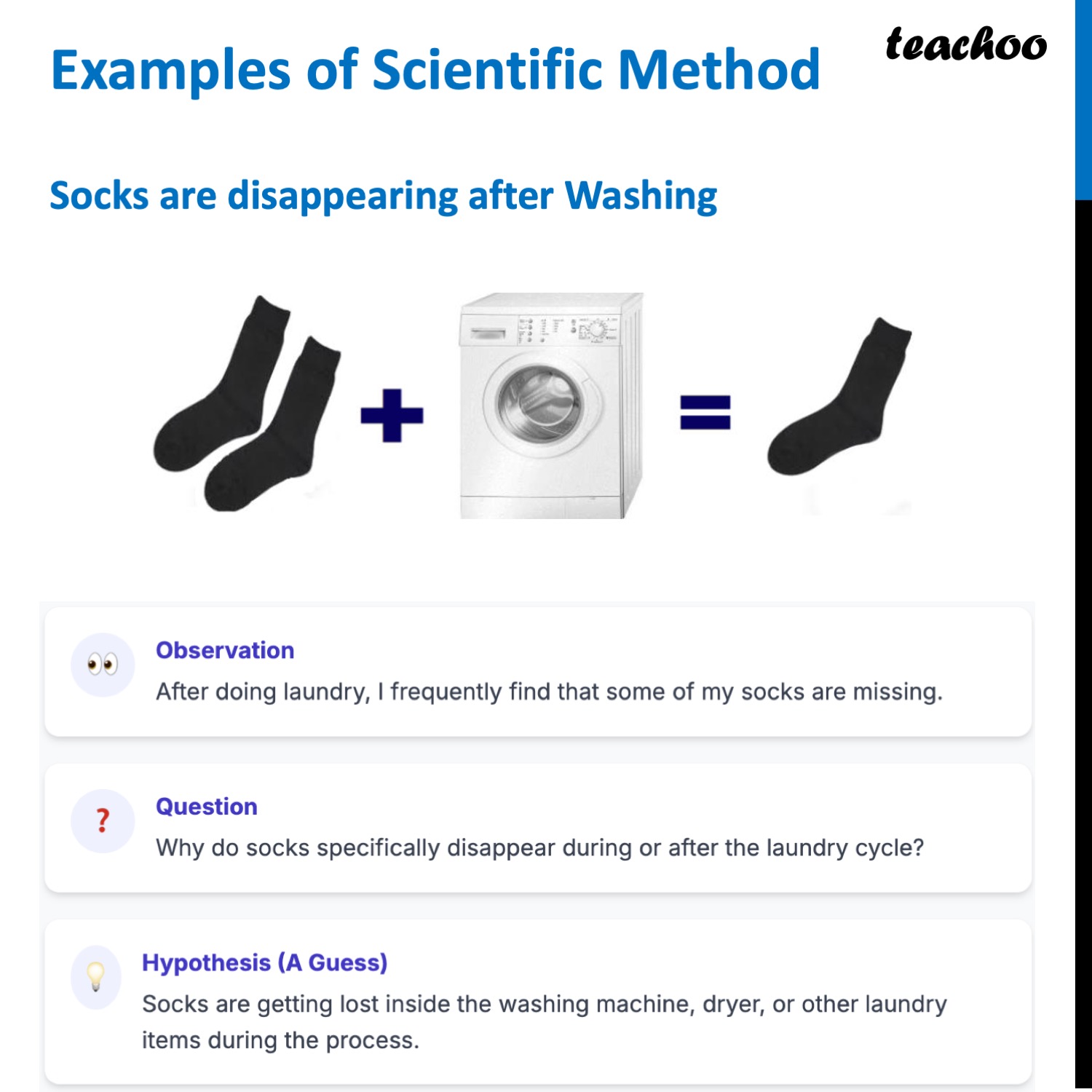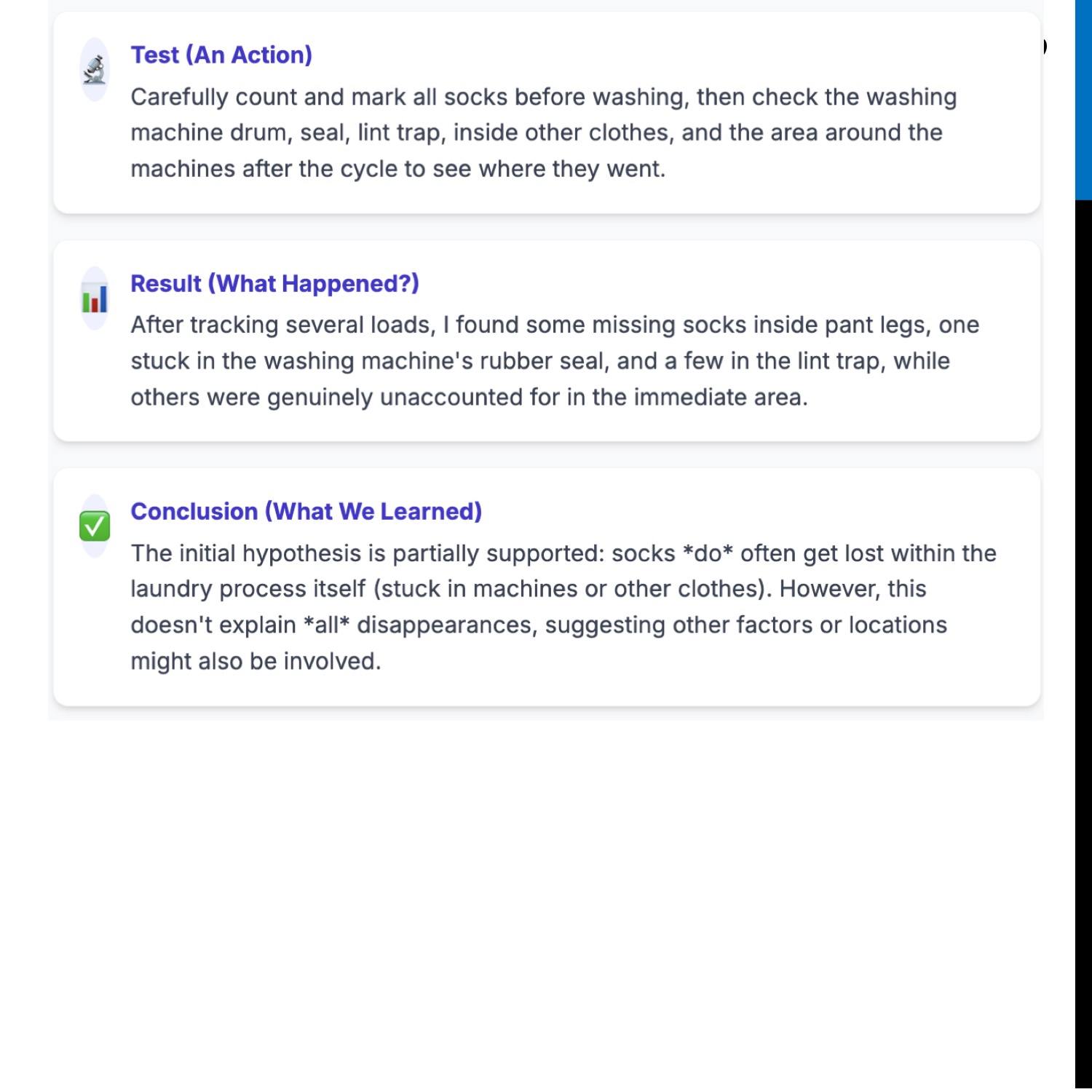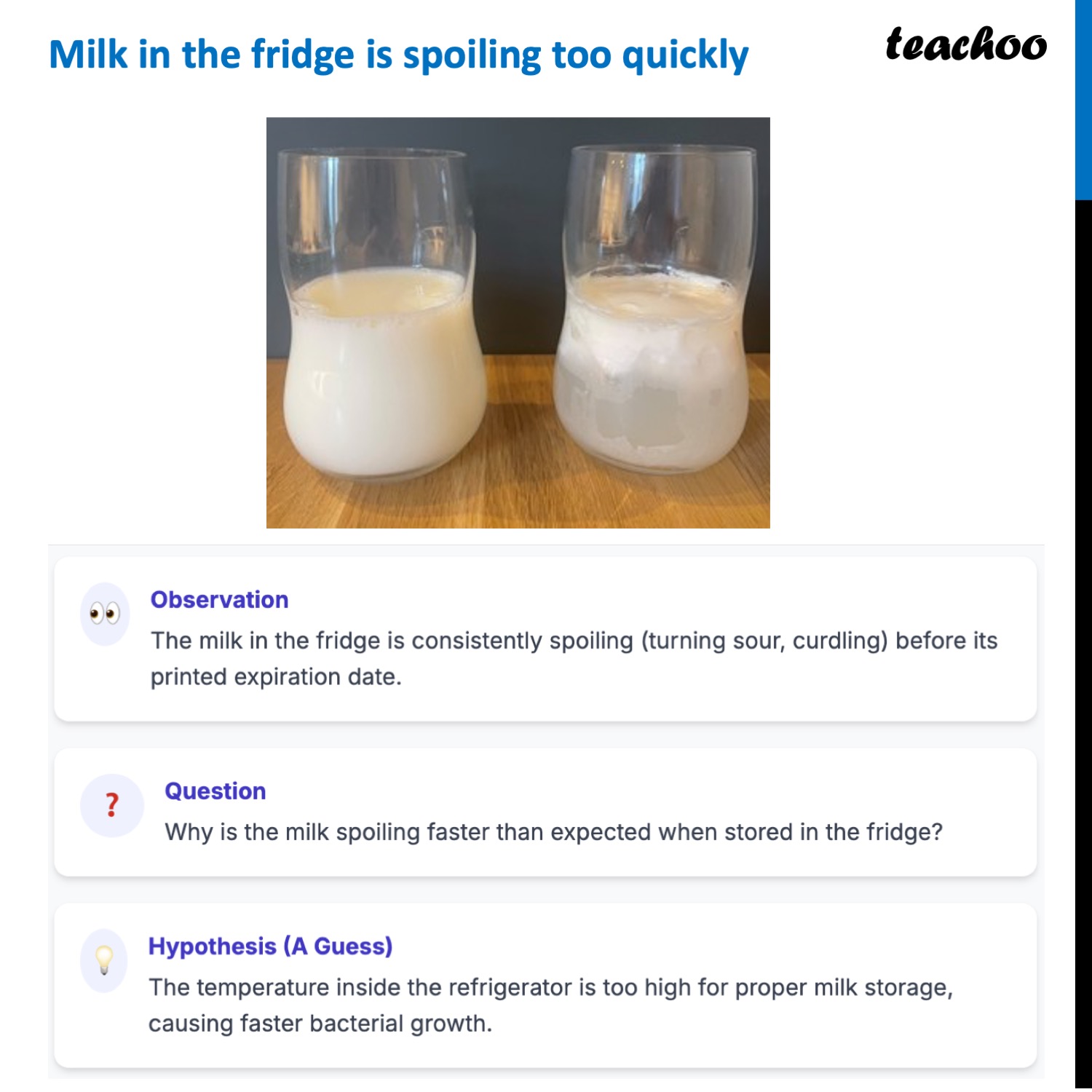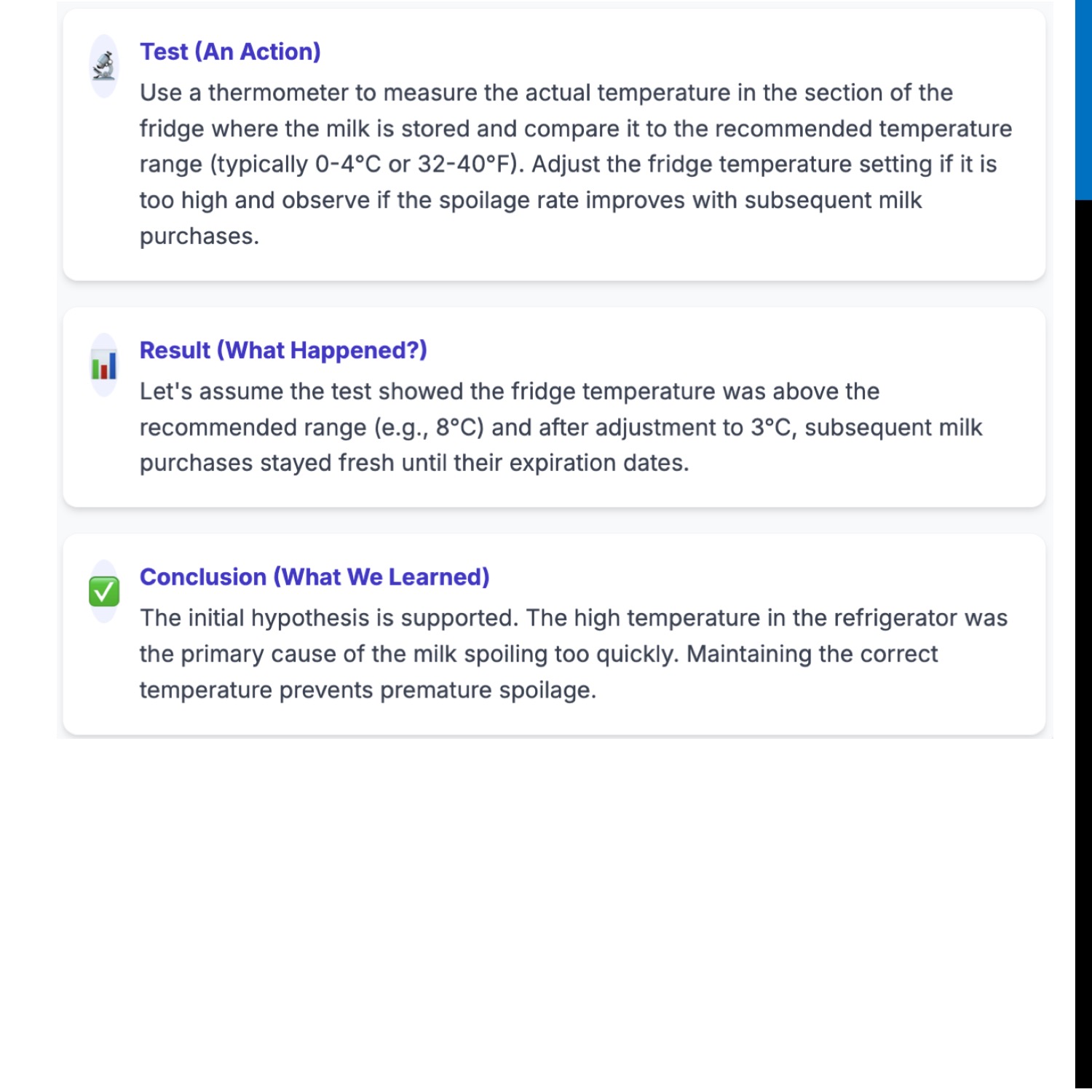



Last updated at July 8, 2025 by Teachoo




Transcript
Socks are disappearing after Washing Observation After doing laundry, I frequently find that some of my socks are missing. ? Question Why do socks specifically disappear during or after the laundry cycle? Hypothesis (A Guess) Socks are getting lost inside the washing machine, dryer, or other laundry items during the process. Test (An Action) Carefully count and mark all socks before washing, then check the washing machine drum, seal, lint trap, inside other clothes, and the area around the machines after the cycle to see where they went. Result (What Happened?) After tracking several loads, I found some missing socks inside pant legs, one stuck in the washing machine's rubber seal, and a few in the lint trap, while others were genuinely unaccounted for in the immediate area. Conclusion (What We Learned) The initial hypothesis is partially supported: socks *do* often get lost within the laundry process itself (stuck in machines or other clothes). However, this doesn't explain *all* disappearances, suggesting other factors or locations might also be involved. Milk in the fridge is spoiling too quickly teachoo Observation The milk in the fridge is consistently spoiling (turning sour, curdling) before its printed expiration date. ? Question Why is the milk spoiling faster than expected when stored in the fridge? Hypothesis (A Guess) The temperature inside the refrigerator is too high for proper milk storage, causing faster bacterial growth. Test (An Action) Use a thermometer to measure the actual temperature in the section of the fridge where the milk is stored and compare it to the recommended temperature range (typically $0-4^{\circ} \mathrm{C}$ or $32-40^{\circ} \mathrm{F}$ ). Adjust the fridge temperature setting if it is too high and observe if the spoilage rate improves with subsequent milk purchases. Result (What Happened?) Let's assume the test showed the fridge temperature was above the recommended range (e.g., $8^{\circ} \mathrm{C}$ ) and after adjustment to $3^{\circ} \mathrm{C}$, subsequent milk purchases stayed fresh until their expiration dates. Conclusion (What We Learned) The initial hypothesis is supported. The high temperature in the refrigerator was the primary cause of the milk spoiling too quickly. Maintaining the correct temperature prevents premature spoilage.